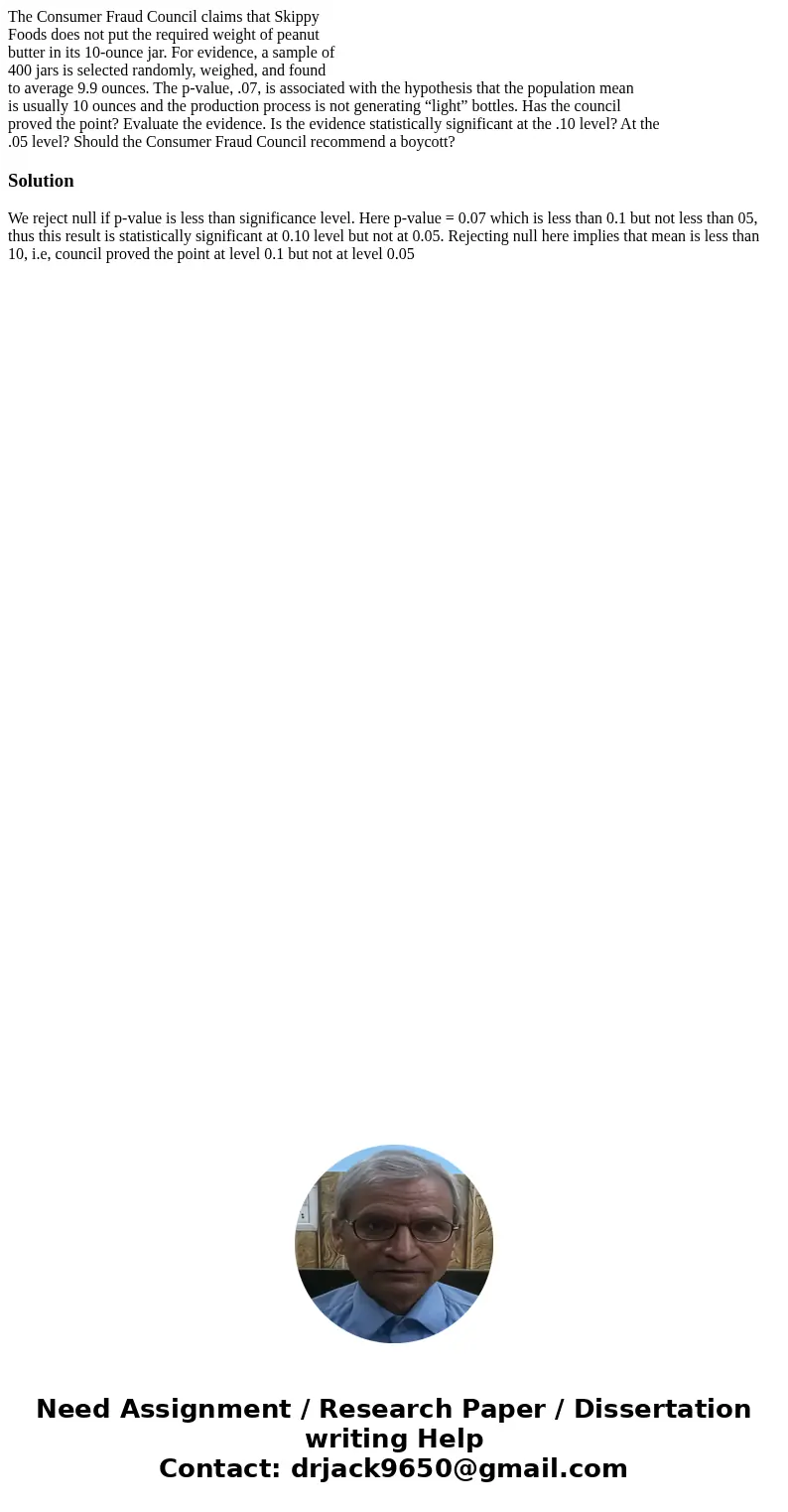The Consumer Fraud Council claims that Skippy Foods does not
The Consumer Fraud Council claims that Skippy
Foods does not put the required weight of peanut
butter in its 10-ounce jar. For evidence, a sample of
400 jars is selected randomly, weighed, and found
to average 9.9 ounces. The p-value, .07, is associated with the hypothesis that the population mean
is usually 10 ounces and the production process is not generating “light” bottles. Has the council
proved the point? Evaluate the evidence. Is the evidence statistically significant at the .10 level? At the
.05 level? Should the Consumer Fraud Council recommend a boycott?
Solution
We reject null if p-value is less than significance level. Here p-value = 0.07 which is less than 0.1 but not less than 05, thus this result is statistically significant at 0.10 level but not at 0.05. Rejecting null here implies that mean is less than 10, i.e, council proved the point at level 0.1 but not at level 0.05

 Homework Sourse
Homework Sourse